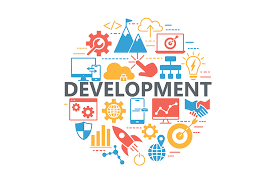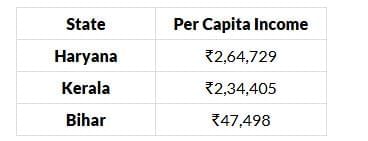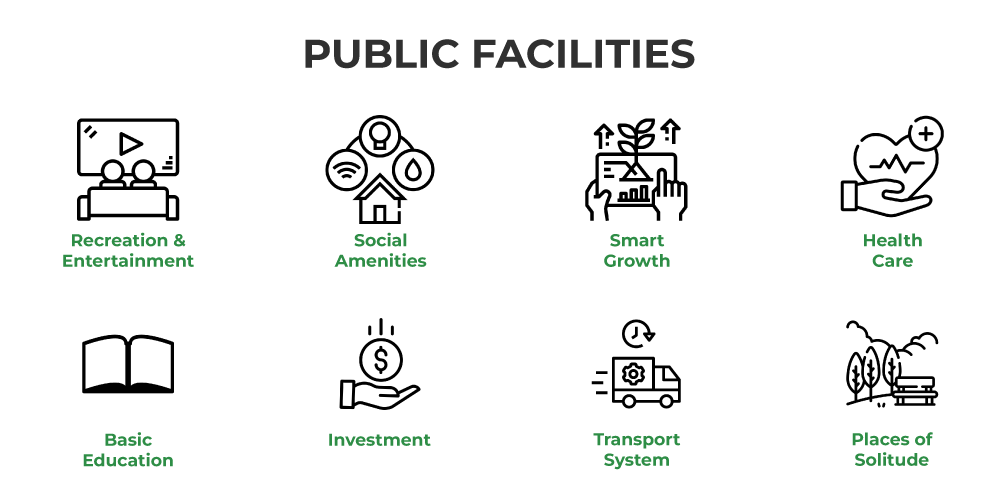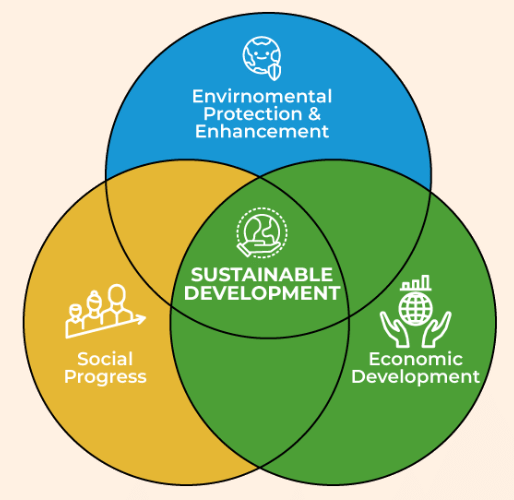Class 10 Exam > Class 10 Notes > Social Studies (SST) Class 10 > NCERT Summary: Development
Development Summary Class 10 Social Science Chapter 1
Overview
(i) Perspectives on development.
(ii) Common indicators for development.
(iii) Method for measuring development.
(iv) Concept of purchasing power parity.
What Development Promises - Different People, Different Goals
- Development offers real growth by increasing total income and improving the standard of living.
- It also covers non-material aspects such as security, respect, and equal treatment.
- Different individuals have various development goals; for instance, a girl from a wealthy urban family enjoys the same freedoms as her brother and can make her own life choices, including studying abroad.
Income and Other Goals
- Many people aim to earn more income to meet their daily needs. Money and the things it can buy are essential for our lives. Alongside the pursuit of higher income, individuals seek equal treatment, freedom, security, and respect from others. Discrimination is something they strongly dislike. All these factors are significant goals.
- Some companies may offer lower salaries but provide stable employment, which gives a sense of security. On the other hand, some firms pay high wages but lack job security, which can lead to feelings of insecurity.
National Development
- National development means a country’s ability to raise the living standards of its people.
- The living standards depend on factors like per capita income, Gross Domestic Product, literacy rates, and access to health services. These elements are also seen as important indicators of progress, though they are often overlooked.
Question for NCERT Summary: DevelopmentTry yourself:Which of the following is NOT considered an indicator of national development?
View Solution
How to Compare Different Countries or States?
- We can compare various countries or states based on per capita income.
- This comparison should focus on the average income, rather than national income, due to differences in population sizes.
- Average income, also known as per capita income, is calculated by dividing a country's total income by its total population.
- Per capita income is a measure of the average income and does not fully capture the standard of living, as it overlooks income distribution.
- Countries with higher incomes are typically referred to as developed countries.
- As of 2023, countries with a per capita income of US$ 63,400 or more are classified as high-income or rich countries, while those with a per capita income of about US$ 2,400 or less are considered low-income countries.
Income and Other Criteria
- For achieving development goal of people, people not only want better income, they also want non-material thing like, freedom, security, and respect of others.
- For development of a nation average income or per capital income is needed.
 Per Capita Income of Selected States
Per Capita Income of Selected States
If per capita income were to be used as the measure of development, Haryana will be considered the most developed and Bihar the least developed state of the three. However, this is not true, if we look at the other criteria.  Comparative Data of Haryana , Kerala and Bihar
Comparative Data of Haryana , Kerala and Bihar
- Literacy Rate: It is the number of people above 7 years of age who are able to read and write with understanding. Higher the literacy rate, more developed a state will be. India has a literacy rate of 64%. Kerala has the highest literacy rate and Bihar has the lowest.
- Infant Mortality Rate: It is the number of children that die before attaining one year of age as a proportion of 1000 live births in a year. It indicates the development of health facilities in a country. In India, Kerala has the lowest IMR while Bihar has the highest.
- Net Attendance Ratio: It is the total number of children of age group 14 and 15 years attending school as a percentage of total number of children in the same age group.
- In this table:
- The first columns shows that in Kerala, out of 1000 children born, 6 died before completing one year of age but in Haryana, the proportion of children dying within one year of birth was 28, which is two times more than that of Kerala. This number is 27 in Bihar.
- Literacy rate in Kerala is 94 percent which is higher than Haryana (82%) and Bihar (62%).
- The last column shows that in Kerala, 94 children out of 100 aged 14-15 are attending school beyond Class 8, which is greater than Haryana (73) and Bihar (69).
Question for NCERT Summary: DevelopmentTry yourself: Which of the following factors is NOT considered when comparing the development of different states or countries?View Solution
Public Facilities

- Facilities which are provided by the government considered as public facility like schools, hospitals, community halls, transport, electricity etc.
- As we know that Punjab has more income than the average person in Kerala but Kerala has a low infant Mortality Rate because of better public system like, Public Distribution System which provide Health and nutritional status to the state.
- We need public facility because we are not able to purchase all things by money. We cannot able to buy a pollution free environment with the help of money.
Sustainability of Development

- Sustainable Development refers to development of human with at the same time sustaining the ability of natural system.
- It is helpful to fulfils the needs of the human being without harming the ability of the future generation.
- For sustainable development, we have to use non-renewable resources like carbon based originally designed fuel for the quantity how much we needed.
- Some renewable resources like groundwater will take long time for replenished. So, we should use that resource in finite quantity.
- Infant Mortality Ratio: Infant Mortality Ratio indicates the number of children who die before the age of one year, as a proportion of 1000 live children born in that particular year.
- Literacy Rate:Literacy Rate measures the proportion of literate population in the 7 and above age group.
- Net Attendance Ratio: It is the total number of children of age group 14 and 15 years who attending school as a percentage of total number of children in the same age group.
The document Development Summary Class 10 Social Science Chapter 1 is a part of the Class 10 Course Social Studies (SST) Class 10.
All you need of Class 10 at this link: Class 10
|
88 videos|630 docs|79 tests
|
FAQs on Development Summary Class 10 Social Science Chapter 1
| 1. विकास क्या है और यह क्यों महत्वपूर्ण है? |  |
Ans. विकास का अर्थ है सामाजिक, आर्थिक, और राजनीतिक प्रगति, जिसमें लोगों के जीवन स्तर में सुधार करना शामिल है। यह महत्वपूर्ण है क्योंकि यह समाज में समृद्धि, स्थिरता और लोगों की खुशी को बढ़ावा देता है।
| 2. विकास के प्रमुख संकेतक कौन-कौन से हैं? |  |
Ans. विकास के प्रमुख संकेतकों में प्रति व्यक्ति आय, जीवन प्रत्याशा, शिक्षा का स्तर, और स्वास्थ्य सेवाओं की उपलब्धता शामिल हैं। ये संकेतक किसी देश की आर्थिक और सामाजिक स्थिति को दर्शाते हैं।
| 3. विकास की प्रक्रिया में किन बाधाओं का सामना करना पड़ता है? |  |
Ans. विकास की प्रक्रिया में कई बाधाएँ आ सकती हैं, जैसे राजनीतिक अस्थिरता, भ्रष्टाचार, प्राकृतिक आपदाएँ, और सामाजिक असमानता। ये सभी कारक विकास को प्रभावित कर सकते हैं।
| 4. किस प्रकार के विकास को सतत विकास कहा जाता है? |  |
Ans. सतत विकास वह विकास है जो वर्तमान आवश्यकता को पूरा करते हुए भविष्य की पीढ़ियों की आवश्यकताओं को ध्यान में रखता है। यह आर्थिक, सामाजिक, और पर्यावरणीय संतुलन को बनाए रखने की कोशिश करता है।
| 5. विकास और पर्यावरण के बीच संबंध क्या है? |  |
Ans. विकास और पर्यावरण के बीच गहरा संबंध है। विकास की प्रक्रियाएँ अक्सर पर्यावरण पर दबाव डालती हैं, इसलिए यह आवश्यक है कि विकास योजनाएँ पर्यावरण संरक्षण को ध्यान में रखें ताकि प्राकृतिक संसाधनों का संतुलित उपयोग हो सके।
Related Searches






















